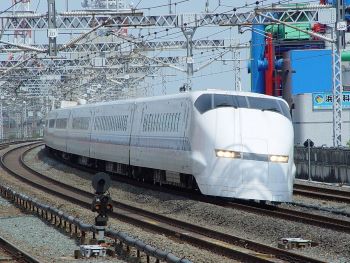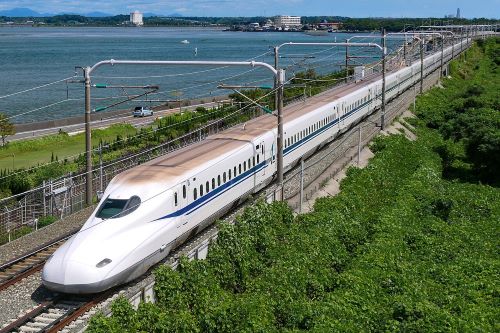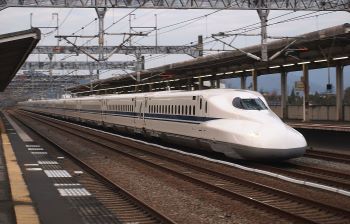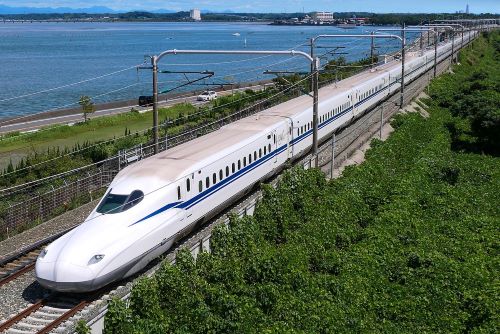Passenger train services • Main line services / Ticketing • High speed Rail • Japan • JR Central
➤ See also: Shinkansen overview – Shinkansen infrastructure and stations – JR Hokkaïdo – JR East – JR West – JR Kyushu
➤ See also: High speed train in France – High speed train in Germany – High speed train in Italy – Economics
Note: For educational purpose only. This page is meant purely as a documentation tool and has no legal effect. It is not a substitute for the official page of the operating company, manufacturer or official institutions. It cannot be used for staff training, which is the responsibility of approved institutions and companies.
👉 (Version française disponible)
In brief
In April 1987, the Japanese National Railways (JNR) were divided into seven companies: one for freight and six for passenger transport, known as JR. We will briefly present the high-speed rolling stock of each of these companies : JR Hokkaido, JR East, JR Central, JR West and JR Kyushu.
The JR Central Shinkansen, operated by the Central Japan Railway Company (JR Central), is a vital part of Japan’s high-speed rail network, connecting key regions in central Honshu. Its flagship line, the Tōkaidō Shinkansen, opened in 1964, is the world’s first high-speed rail line and remains one of the busiest and most profitable. It links Tokyo, Nagoya, and Osaka, covering 515 kilometers in just under 2.5 hours.
Infrastructure managers: JR Central
Operators: JR Central
First services: (October 1964 under JNR)
Lenght of Shinkansen network : 515 km
Speed : 270 to 285km/h
Trains on the Tōkaidō Shinkansen operate at speeds of up to 285 km/h, utilizing state-of-the-art rolling stock like the N700S Series, which offers improved energy efficiency, safety, and passenger comfort. Known for its punctuality and frequent services, the line is crucial for business and tourism, transporting millions annually.
JR Central is also spearheading the development of the Chūō Shinkansen, a maglev train line that will connect Tokyo to Nagoya by 2027, with speeds reaching an astonishing 500 km/h. This project represents a leap in high-speed rail innovation, significantly reducing travel time between major cities.
With its commitment to technological advancement, safety, and sustainability, JR Central Shinkansen continues to be a global leader in high-speed rail, connecting Japan’s most populous regions with unparalleled efficiency.
The definition of a high-speed train varies by region, but generally, it refers to trains that operate at speeds of at least 250 km/h (155 mph) on newly built lines and 200 km/h (124 mph) on upgraded lines. In Europe, for example, the UIC (International Union of Railways) considers a commercial speed of 250 km/h as the principal criterion for high-speed rail. In the United States, the definition can include trains operating at speeds ranging from 180 km/h (110 mph) to 240 km/h (150 mph).
➤ See the UIC definition
National rolling stock (past and present)

Hitachi, Kawasaki Heavy Industries, Kinki Sharyo, Nippon Sharyo
1990 – 2012

Hitachi, Kawasaki Heavy Industries, Kinki Sharyo, Nippon Sharyo
1997 – …

Hitachi, Kawasaki Heavy Industries, Kinki Sharyo, Nippon Sharyo
2007 – (2019)

Hitachi, Kawasaki Heavy Industries, Kinki Sharyo, Nippon Sharyo
2005 – (2019)

Hitachi, Nippon Sharyo
2020 – …
[TOP]
Infrastructure • High speed Rail • Japan • Lexical
